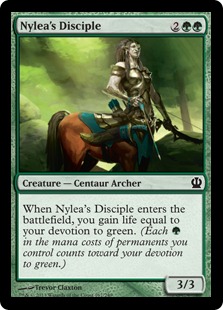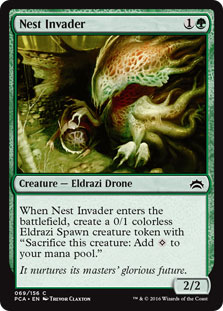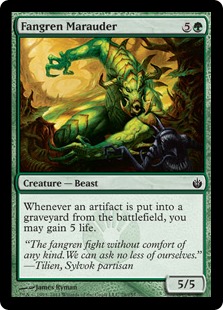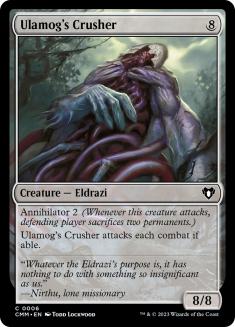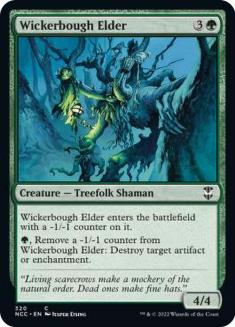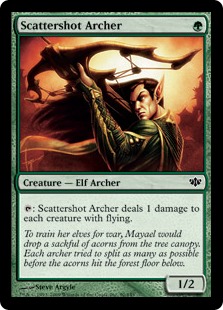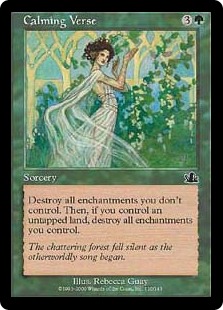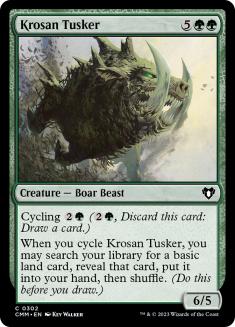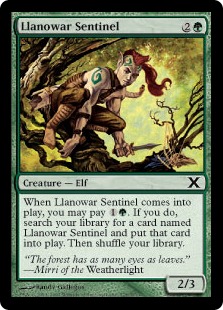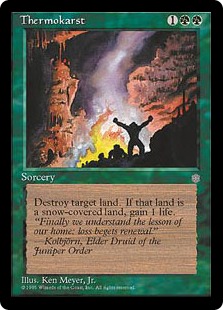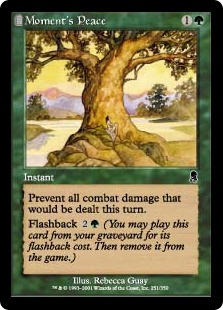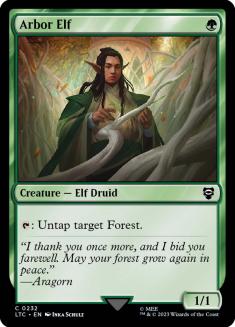For the past three weeks, I have been playing one deck in Pauper. An experiment led me to approach the format from a different angle, and the experience has been eye opening. Before I get into that, I want to take a moment to thank the Magic Online team. A few days after my last article went live, Wizards announced that they would be lowering the minimum threshold for Pauper Premier Events so that they would have a greater chance of filling. On top of this, they added a fifth Premier Event.
I don’t believe my article had any effect on their plan—I just had good timing. That being said, I believe the Magic Online team deserves credit for being attentive to the needs of their customers. These people take a lot of criticism and critique (some warranted, some not), but they continue to work toward the best possible environment for all players.
The addition of another event (and making them more likely to fire) bodes well for Pauper. This past weekend four of the five went off and featured 135 unique entrants. It’s a start, but let’s keep the format going strong. If you’re looking to start playing Pauper and want something a bit different, well, I think this deck could be right up your alley.
This started because I was home on Christmas Day. Since I don’t celebrate, I decided to fire up Magic Online and put together something in the spirit of the season. Discussion on my Facebook page about underplayed cards included Flame Slash. This got me thinking about that instant-speed Flame Slash:
Skred is quite the card—it can handle just about any creature and scales up as the game progresses. It does not hit players, and the current crop of red decks really need burn to go two ways to help seal the deal. But this did not deter me. I took a couple of ideas that had been rattling around inside my head and put together a deck. In particular I wanted to highlight what I thought was a sweet interaction—Arbor Elf and Utopia Sprawl powering out fast Imperiosaurs. Spoiler alert: this does not actually work since the controller of Utopia Sprawl adds the mana to the pool, not the land. I ended up swapping the Imperiosaurs out for Rumbling Baloths, and this was the result:
Creatures (26)
- 4 Mogg War Marshal
- 2 Borderland Ranger
- 4 Arbor Elf
- 4 Slaughterhorn
- 4 Rumbling Baloth
- 4 Leafcrown Dryad
- 4 Ill-Tempered Cyclops
Lands (22)
Spells (14)

Two things about this deck impressed me. The first was the Arbor Elf and Utopia Sprawl engine. This allowed for some explosive starts and for the deck to power out its four-drops in no time. Second, I really liked how well Haunted Fengraf worked. I was turned on to this card by Josh Silvestri. He mentioned how much he likes the card since it allows one to maximize the power of a land slot. Pauper has a relatively flat power level, and in an attrition war getting back any creature is going to be helpful.
Nothing else stuck. The deck was fine at what it did—play creatures, kill things—but this was not anything special. I migrated away from red and moved to a mono-green deck I built after reading Zvi Mowshowitz’s article on hypermana deckbuilding. I got stuck on the "every card must be mana or a threat" rule and ended up building a deck that was heavy on threats (but none of them were very good).
Thankfully, I lost.
In a fateful practice match, my opponent and I had similar starts—Arbor Elf and Utopia Sprawl for me and Arbor Elf, Wild Growth, and Voyaging Satyr for them. I proceed to get my face smashed in by what appeared to be an old Mono-Green Post decklist replacing the banned cards with an Arbor Elf / Voyaging Satyr and Utopia Sprawl / Wild Growth mana engine. The subsequent thrashing was eye opening.
A few thoughts immediately came to mind. First was that I needed to revisit Zvi’s article on hypermana. The second was the power of the mana engine that had just trampled me. I thought back on two lists. First was the combo list that came in second in the first Casting Commons Pauper Event:
Creatures (10)
Lands (16)
Spells (34)
- 1 Capsize
- 4 Fertile Ground
- 1 Kaervek's Torch
- 4 Freed from the Real
- 1 Gigadrowse
- 3 Train of Thought
- 4 Utopia Sprawl
- 4 Ponder
- 4 Preordain
- 4 Forbidden Alchemy
- 4 Abundant Growth
Sideboard

The second list was my own take on Mono-Green Cloudpost:
Creatures (19)
- 4 Wall of Roots
- 4 Llanowar Sentinel
- 4 Aurochs Herd
- 4 Overgrown Battlement
- 2 Ulamog's Crusher
- 1 Sentinel Spider
Lands (23)
Spells (18)

The mana engine from Freed Combo could very easily replace the Cloudpost engine. However, something would have to be lost in translation as the Elves and Auras are spells and not lands. That ended up being the land destruction suite. At the time I wrote the Sentinel Green article, Cloudpost decks were everywhere. Now that the card has been banned, the number of decks relying on nonbasic mana engines has dwindled to RUG Tron and Esper Sage Combo. While powerful, these two decks are not so prevalent as to devote a deck to destroying someone else’s resources.
This was where I started with my take on the offspring of these two decks:
Creatures (32)
- 4 Llanowar Sentinel
- 4 Aurochs Herd
- 4 Citanul Woodreaders
- 4 Arbor Elf
- 4 Nest Invader
- 3 Ulamog's Crusher
- 2 Fangren Marauder
- 3 Nylea's Disciple
- 4 Voyaging Satyr
Lands (20)
Spells (8)

Before getting into the evolution of the deck, I want to talk more about adapting hypermana deckbuilding to Pauper. If you have not done so, I highly recommend Zvi’s article, which I will link again right here. Zvi goes into the details of how to build a deck from the mana up, and it is quite enlightening. Let’s take a look at how the tenets of his theory can apply to this brew:
"1. You mana base, including your color, has to be iron clad."
This deck runs twenty lands, eighteen of which produce green mana on turn 1. As we are only casting green spells, color commitment is not a problem. Verdict: Pass
"2. You must be able to turn your mana cards into powerful weapons in their own right."
Ouch. While Nest Invader is a fine creature when it comes to combat, Arbor Elf and Voyaging Satyr leave something to be desired. That being said, attacking with one-power creatures is not the worst. The eight land Auras however do nothing to inflict damage. These cards are integral to the strategy and cannot be replaced, but they also can’t be weaponized. Verdict: Fail
"3. The threats you accelerate into must be able to win the game on their own."
Ulamog’s Crusher might die to Doom Blade, but it can still end games. This deck can power out the Eldrazi as early as turn 3, and the game tends to end shortly after that. A single Aurochs Herd also is capable of sealing the deal since it comes with friends, and Fangren Marauder is all sorts of trouble for Affinity (featuring Atog) and Tron (featuring Chromatic Star and Expedition Map). Verdict: Pass
"4. The biggest threat must be powerful enough to overwhelm opponents."
An early Ulamog’s Crusher is enough to disrupt any opposing game plan. Most Pauper decks are not flooding the board in the early turns, so the Crusher will start eating lands rather quickly. Aurochs Herd also works here since in multiples it can eat any blocker a Pauper deck can reasonably put in its path. Verdict: Pass
"5. You need a way to make your cards keep you alive against aggression."
The above deck excels in this area. Nest Invader is the right size to trade with multiple early drops, and the Eldrazi Spawn token does a fine job of chump blocking. Llanowar Sentinel blocks incredibly well while surviving against the 2/2s of the format. It is also well within the realm of possibility to have two of them on turn 2 or three on turn 3.
The Citanul Woodreaders in the above list also worked as Horned Turtles (although they were eventually replaced). The real discovery with this deck was Nylea’s Disciple. This card can come down as early as turn 2 (and gain four life in the process). The Hill Giant sized body is more than respectable, but it is the life gain that shines. Nylea’s Disciple is one of the key cards in the deck (and later builds bumped the number up to four as we’ll see in a little bit). Verdict: Pass
"6. Every card must be mana or a threat."
As we will see later on, every maindeck card in Eldrazi Green became either mana or a threat. Verdict: Pass
"7. You need a way to not die to mass removal."
Good news: mass removal is almost non-existent in Pauper! Electrickery doesn’t destroy us thanks to Voyaging Satyr. Pestilence and Crypt Rats can be problematic, but playing against those decks requires a change in lines of play specifically designed to reduce vulnerability to these cards (namely not relying on Arbor Elf and Voyaging Satyr as heavily). These cards also have a very hard time taking out an Ulamog’s Crusher without killing their controller. Verdict: Pass
Hypermana makes sense in Pauper because it is largely a monochromatic format. The nature of the lands available makes going solo an enticing proposition. Cards like Corrupt, Fireblast, Gray Merchant of Asphodel, Gush, and Spire Golem all make having "ironclad" mana bases enticing. Without stronger dual lands, it only makes sense to build around a single point on the color pie to increase your ability to cast your spells. Hypermana becomes attractive in this realm because it allows you to take advantage of this restriction rather than be limited by it.
Putting this deck through the gauntlet of two-person and eight-person Pauper queues proved rewarding. After learning how to pilot the deck (which took a few tries), I started to make improvements, and they all revolved around Citanul Woodreaders. The green Mulldrifter was always good yet never great. I felt I could get more out of those slots. I cut one for the fourth Nylea’s Disciple since that card proved key in multiple matchups.
I then cut another two, leaving one in the deck, for Fierce Empath. This was a card I had cast aside in my work on Sentinel Green, but it makes far more sense here. In Sentinel Green the threats were secondary—land destruction bought time to find them. Today there is no such luxury, so Fierce Empath finds the right tool for the job. I have been pleased with them, and they also do a great job chump blocking.
I then replaced the final Citanul Woodreaders with Krosan Tusker. The Tusker is just plain better at everything besides blocking. Krosan Tusker is uncounterable card draw and can find mana. On top of that, it is a strong threat in its own right. Citanul Woodreaders is a card I have a soft spot for, but sometimes you have to kill your darlings.
After a few more rounds I found I was never bringing in the Serrated Arrows and made space for the sniper of Faeries everywhere. I also moved a Fangren Marauder to the board since Krosan Tusker has similar utility as a creature. If Affinity floods the metagame, I will consider bringing the second Marauder back into the stack of 60.
Creatures (32)
- 2 Krosan Tusker
- 2 Fierce Empath
- 4 Llanowar Sentinel
- 4 Aurochs Herd
- 4 Arbor Elf
- 4 Nest Invader
- 3 Ulamog's Crusher
- 1 Fangren Marauder
- 4 Nylea's Disciple
- 4 Voyaging Satyr
Lands (20)
Spells (8)

Eldrazi Green breaks down into three pieces: the core, the "shouldn’t be swapped," and the flex slots. First there is the core:
18 Forest
4 Arbor Elf
4 Voyaging Satyr
4 Utopia Sprawl
4 Wild Growth
These are the cards the deck needs to run, and the numbers should not be changed. The Forest count makes it incredibly likely that you will have access to green on turn 1. The configuration of Elves and Auras also provides the best chance for explosive starts. In order for Eldrazi Green to go, these cards need to be in place.
These are the only cards I consider untouchable. The following are cards I would not change without significant testing.
The Nest Invaders do work. They provide a two-drop and a token—two things that help protect your more important creatures from Geth’s Verdict. The Invader also soups up devotion and blocks well, both of which come in handy when fighting beatdown. If there comes a time when black edict effects are absent, I could see moving toward Wall of Roots, but for now Nest Invader is tops.
Nylea’s Disciple is much more than a 3/3. In this deck, you’re almost always going to be gaining at least four life. It is basically a Tendrils of Corruption that can also go on offense since the Disciple can trade with just about any creature outside of Spire Golem and Gray Merchant of Asphodel. The fact that this can come down on turn 2 in Eldrazi Green cements its slot in my mind.
The Auorchs Herd and Llanowar Sentinels are your main form of card advantage. Herd provides a steady stream of 4/4s that can end a game in short order or tussle with the best creatures Pauper has to offer. The Sentinel is small but comes online earlier. I have no qualms of casting a Llanowar Sentinel when I have seven mana available in the early game (again, this happens on turn 3 rather often). Many decks are unable to deal with six power across three bodies that early in the game. Against the decks that can, the Sentinels buy you time until the monsters come online.
Speaking of monsters, I would not run fewer than two copies of Ulamog’s Crusher in this deck. The Eldrazi must be answered—if not, they will end the game in short order. Having access to one on turn 3 does a great job of slamming the door on any comeback.
Fierce Empath is also a card I would hesitate to cut. This card is an extra copy of any fatty in your deck. It also is great fodder for Diabolic Edict and its ilk. I have considered a third copy of the tutor Elf but have not found any space for it yet.
Krosan Tusker is not sacrosanct, but man is it useful. Mana when you need it and a monster when you want one, I love this card in matchups when you are trying to exhaust an opponent’s resources. The prevalence of these decks has forced me to include two copies main. I could see a world where I run more or none.
So with the two copies of Tusker, the third Ulamog’s Crusher, the Fangren Marauder, and the two copies of Haunted Fengraf, that leaves six flexible slots. That is not a lot of wiggle room. The cards that keep catching my eye for potential inclusion include:
Walker of the Grove: A common thanks to Modern Masters. This card can be fetched with Fierce Empath and then provide a five-drop. Against removal-heavy decks it is two monsters. Right now I can’t find a spot, but it is on the short list.
Nessian Asp and Sentinel Spider: Delver is not an easy matchup since they can just fly over your defenses. These brawlers can stop a horde of Faeries. I like Asp because it can go big (which isn’t a challenge in this deck) and Spider because of vigilance. I do wish one of them cost six because that would make the choice so much easier.
This deck is largely straightforward. Your opening hands need to be explosive—if you’re not accelerating into something by turn 3, you probably want to mulligan. The most important thing in the first seven cards (or six, or five) is the ability to establish a board presence with mana where any topdeck is going to find its way on the battlefield.
The key turns for this deck are 1 and 2. If your opening hand has an Arbor Elf, you want to lead with it unless your opponent is likely to have turn 1 removal. In that case, you want to start with a Utopia Sprawl or Wild Growth if possible—this will protect your ability to ramp on turns 2 and 3. In game 1, it is usually okay to load up one land with as many Auras as it can handle since no deck packs Stone Rain effects main at the moment (but that could change if this deck picks up).
Time to talk about what you’re likely to face in tournaments!
Delver: The most popular Pauper deck by a wide margin, Delver presents an interesting opponent. One of their best spells is largely useless against your threats since Spellstutter Sprite has a hard time stopping an Ulamog’s Crusher. On the play, you want to aggressively play your Auras and Elves to get around their counterspells and be able to spew out multiple threats in the later turns. At the high end, Delver will run eight hard counters (four Counterspell, two Deprive, two Exclude is a common mix for the permission-heavy versions), so it is possible to run them out of answers. Haunted Fengraf is quite helpful here, but make sure you get into a position where it can get you back a monster.
Out (on the draw):
Out (on the play):
In:
The different play/draw sideboard plans reflect how important Nest Invader is in certain lines of play. On the draw, you want to have one to help with board development and attack before Spire Golem comes down. Wickerbough Elder is a nod to their common sideboard inclusion of Coral Net or Narcolepsy, and if they aren’t very aggressive, it makes sense to side out another Disciple for the third Elder.
If they play Coral Net on a mana producer, keep it along as long as needed to cast a monster and then let it die. Post-board it is often correct to hold a land or two back to pitch to the Net. Scattershot Archer is another must answer card for them, so if possible bait their Nets with the skyward sniper to allow a game ender to stick.
Delver Control: A less popular blue deck that has more countermagic proves a far easier matchup. This version does not apply early pressure with Cloud of Faeries and Spellstutter Sprite. Against this deck (which signals its divergence from traditional Delver with cards like Think Twice and Accumulated Knowledge on turn 2) you want to play out multiple threats in a turn. You want to exhaust the enemy’s resources early by sticking a threat—one monster goes a long way here.
Out:
In:
Most of their removal is enchantment based—Coral Net or Narcolepsy—and their main threat is Spire Golem. Wickerbough Elder shines here, but it is not a "must resolve." Your game plan does not change in the sideboarded games, but be wary about them siding in Force Spike.
Esper Sage Combo: One reason I like this deck is because it does not automatically concede to Esper Sage Combo. An early Ulamog’s Crusher is vital to success, and sometimes they will just succumb to your army. You want to keep them off Cloud of Faeries and the Sunscape Familiar and Nightscape Familiar duo. This is a matchup where you both want to be the beatdown, and whoever executes their plan first tends to win.
Out:
In:
In games 2 and 3, you want to disrupt their plan. Thermokarst should only be used on cards like Dimir Aqueduct and Azorius Chancery. A turn 1 Scattershot Archer will make it hard for them to combo off with Cloud of Faeries. You want to play the control role until you can play a threat and Thermokarst in the same turn.
Affinity: Eldrazi Green has an excellent Affinity matchup. The life gain from Nylea’s Disciple and Fangren Marauder make Atog and Fling a chore. Your best threat requires them to waste two Galvanic Blasts (which would otherwise go to the dome), and your early drops all overwhelm Frogmite. Llanowar Sentinel is very important here since it can double block a Myr Enforcer or Carapace Forger and one will survive.
Out:
In:
Affinity is not an attrition matchup, so Krosan Tusker rides the pine. Fangren Marauder makes life nearly impossible for Affinity, and powering out a Wickerbough Elder early means you are likely going to eat an artifact land and make their life that much more difficult. There are two cards that make this matchup interesting. The first is Somber Hoverguard. Many Affinity decks have moved away from this creature, but it is hard for Eldrazi Green to beat two of the Snapping Drakes. The second is Raze, which some Affinity decks still pack to fight Tron. In games 2 and 3, you might want to consider spreading your mana auras across multiple lands for protection.
RUG Tron: The other big-mana deck in the format. Your engine is faster, and your creatures are better. Fangren Marauder is an all-star, keeping you well out of Rolling Thunder range. Power out the first Ulamog’s Crusher and it is hard to lose.
Out:
In:
They will be bringing in Earth Rift, so once again spread out your Auras. Fangren Marauder is another threat that is Flame Slash resistant (that also keeps you alive). Nest Invader is fine but does not punch through their Sea Gate Oracles, so Disciple gets the nod here.
Izzet Blitz: The Nivix Cyclops deck will try to kill you before you stick a threat, and your job is simple—do not let them. Nylea’s Disciple needs to be for at least six to matter. Game 1 is in their favor unless you can stick a turn 3 Crusher—then things swing heavily in your favor.
That being said, sometimes they have the Artful Dodge and Assault Strobe, and you just lose.
Out:
In:
Moment’s Peace keeps up the theme of "don’t let them kill you." When using the Flashback Fog, just be aware of Dispel and Flaring Pain since they can derail your shields-up mode. In this battle, you want to mulligan any borderline hand that does not contain Nylea’s Disciple. Acceleration is also key, especially if it comes paired with a Crusher.
Mono-Black Control: Another popular deck, but it hasn’t been seen around the top tables much recently. They are heavy on removal, but you can produce more threats. Nest Invader and Llanowar Sentinel are standouts here since they each represent multiple removal spells that have to be wasted.
Out (on the draw):
Out (on the play):
In:
In games 2 and 3, your paradigm changes. Accelerating out the fastest threat is not the best option since they will often kill your Elves and Satyrs on sight. On top of that, they will bring in Rancid Earth or Choking Sands to nuke your pants-wearing Forest. In games 2 and 3, you want to spread out your Auras for this reason. You also bring in Wickerbough Elder to kill their Oubliettes.
Public Service Announcement: At the time of writing, Oubliette is bugged so that the creature will not return if the enchantment is destroyed. Worth has said a fix is coming, but for the time being be aware that whatever goes into the dungeon will not be coming back.
Even while bugged, Oubliette is a challenge because it feeds the devotion on Gray Merchant of Asphodel. Your creatures will fight well enough to keep most other creatures off the table, and being able to blow up the enchantment will help keep the Merchant under control.
Auras: This deck is making a comeback, so I decided to include it in the matchup guide. They play very similar to Izzet Blitz except they also pack Armadillo Cloak to make your job that much harder. However, like so many other decks in the format, they cannot deal with an Ulamog’s Crusher.
Out:
In:
Again, your goal is to stay alive. Blocking matters less against Auras since they have Rancor and Armadillo Cloak. You definitely want to take a control role and keep their big power boosters (Ethereal Armor and Ancestral Mask) off the board. If this deck ever becomes a major player, I could easily see finding more slots for Calming Verse in the sideboard.
Elves!: While not a popular deck at the moment, I’m including it here for a very special reason. This matchup is unwinnable. Elves can flood the board and offer up tasty morsels to Ulamog’s Crusher with impunity. The only way I can think of to fight this deck is to reach into another color, either red for Electrickery and Swirling Sandstorm or black for Evincar’s Justice. Neither of these does much against an active Timberwatch Elf, so options are limited. If you have ideas, feel free to sound off in the comments.
Eldrazi Green is a powerful strategy. The decks in Pauper are not well equipped to handle an onslaught of huge monsters in the developing stages of the game. Moving forward, I’m going to remain vigilant in searching for strong six-drops and cards that provide more mana punch. I’m hesitant to add another color because right now the consistency is a huge boon.
Let me know your thoughts. What cards am I overlooking? Any matchups I didn’t cover that you want more advice on? And did I do Zvi’s hypermana justice? Sound off below.
Keep slingin’ commons –
– Alex
SpikeBoyM on Magic Online
Check out Common Cause on iTunes!
Discuss Pauper on twitter using #MTGPauper!


